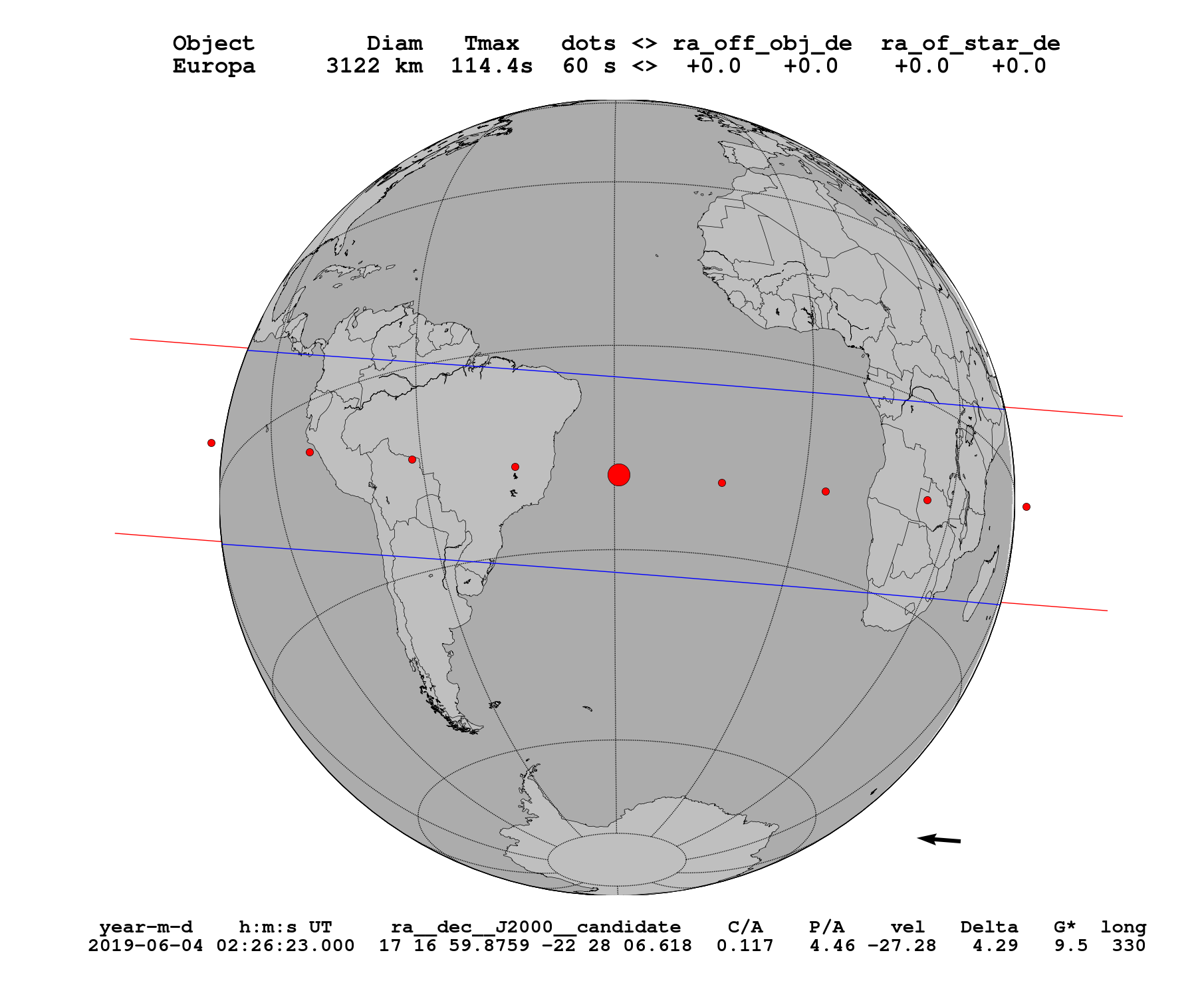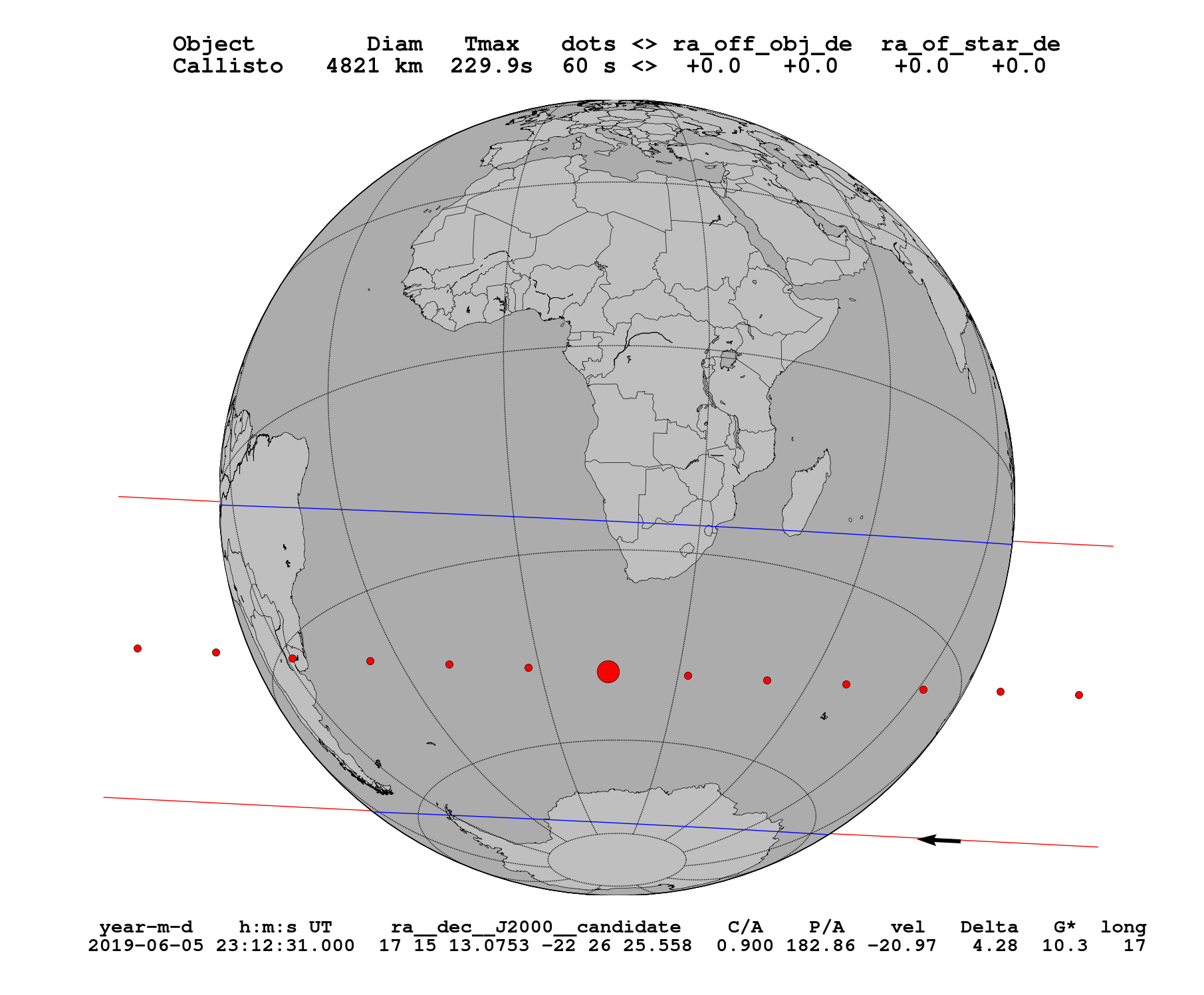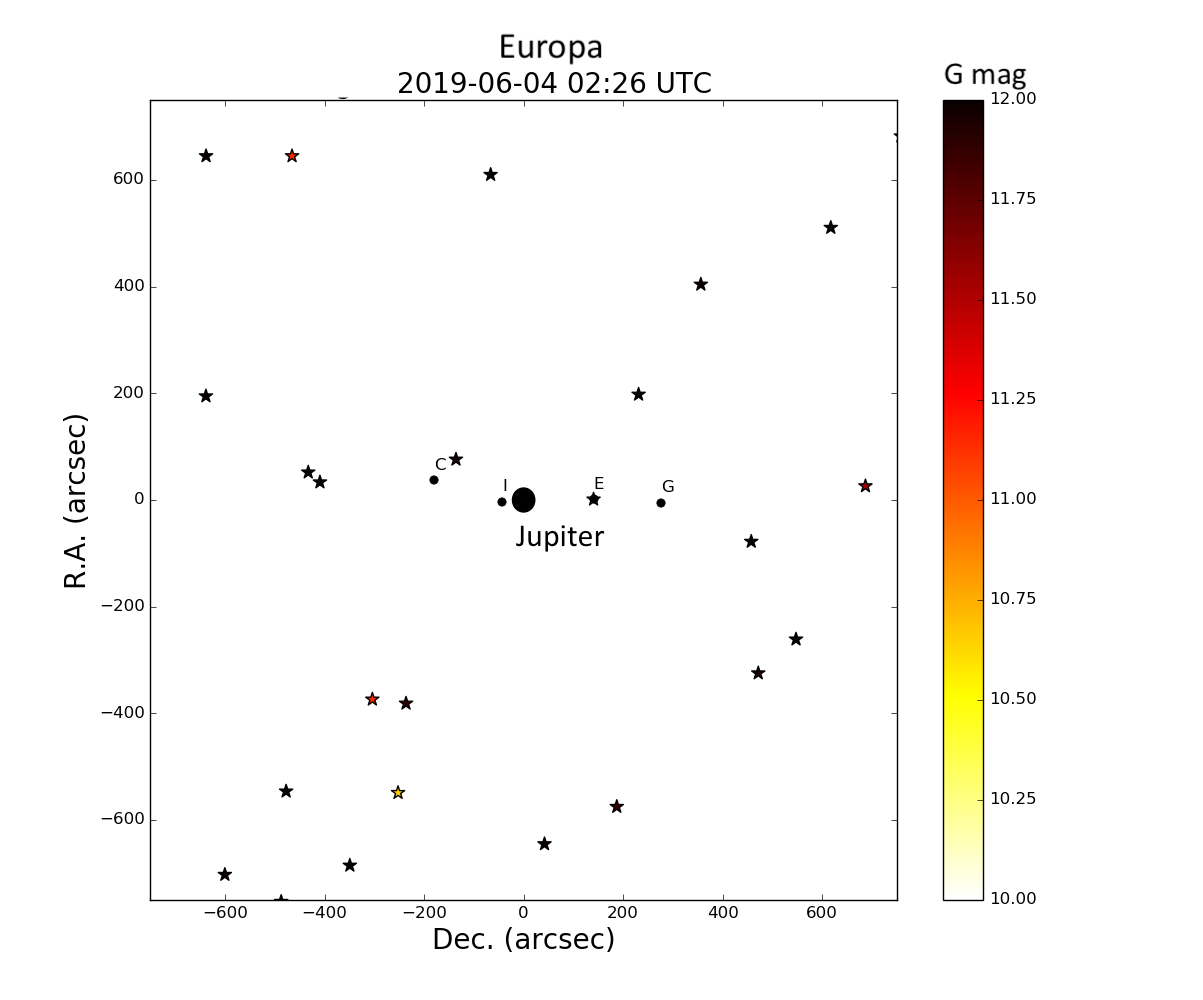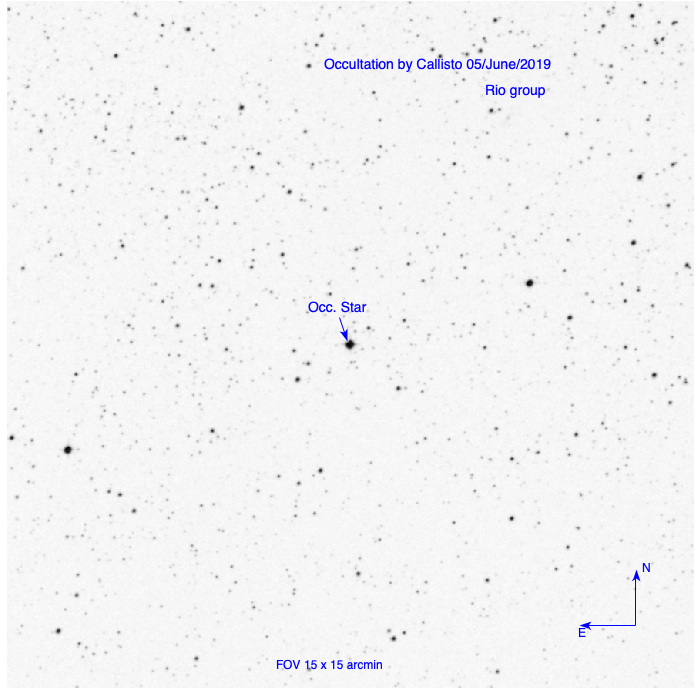Galilean moons Europa and Callisto
June 04 and 05 2019


Important Observation advices:
Although it is easy to find the targets, the observation of stellar occultations by Galilean moons requires some fine-tuning. Please read this advices.
- The Galilean has magnitude V about 5.5 and the star will be around magnitude 9~10, this means a flux drop of about the 3%, this requires high Signal to Noise Ratio (SNR).
Tips:
1) Remove Jupiter from the Field of View
(FOV). However, is important that another satellite is in the FOV
for calibration.
2) If available you may use of red filter. The aim is to dim
Jupiter's scattered light.
3) Take care to no saturate the satellite.
4) High cadence and minimal readout time are desirable.
5) Even though your SNR is not high enough, post-processes
techniques can be applied to remove some of the light curve's noise,
however, these techniques require images with high time resolution.
Procedure:
- Point to the satellite and test the time exposure to see exactly what is the maximum time exposure to be applied that the satellite does not saturate (t_sat).
You should not use an exposure higher than that during the event.
- Point to the star and see what is the minimal time exposure you need to detect the target star (t*).
- It will be good is t_sat is greater than t* (t_sat > t*), so you can use an exposure time smaller (but close) to t_sat.
If not (t_sat < t*) then you should also use an exposure close to t_sat, but a high frame rate is desirable, so we can try to detect the event with after-processing.
- Any questions can be asked to Bruno Morgado (brunomorgado(at)on.br). If you wish, you can send us some images days before the occultation and we will help you acquire the best SNR possible.
After the observation, please fill the
form available on this link (form),
and send it to ribas(at)on.br and brunomorgado(at)on.br.
Important note:
*Absolute time accuracy is essential*
To connect all the observations together after the fact. Check the time of your computer with many sources (phone talked hour, different internet sites, ideally with a GPS). Its advised to check the registered time right after and right before the integrations, so if there is a drift, we can correct it by having the difference.Beware of the dead time between the images: if you manage an exposure time of 1 second (for example), but your camera takes 2 sec to read the image, then there is a 67% chance that you miss the dis(re)-appearance of the star [chance of missing = 1 - {1/(1+2)}]. So it's better to have, for example, a 4 sec integration, so you have 67% chance to get the occultation in one of your exposures [chance of getting = 4/(4+2)].
EUROPA
Observation tips:
- The occultation by Europa will occurs
on the night of the 03 to 04 of
June.
- Observations are requested at least from 02:22 to 02:30
Universal Time.
- Shadow moves from **East to West**;
- The nominal occultation time on the map, corresponds to the big
dot, the closest approach.
- Each dot is separated by one minute;
- *Absolute time accuracy is essential** (see important note below);
Event information:
| Star J2000 coordinates: |
| RA 17 16
59.884 DEC -22 28 06.85 |
| Star G mag | 9.1 |
| Star R mag | 8.6 |
| Star K mag | 7.7 |
| Magnitude drop in G |
0.04 |
| Maximum duration | 114 sec |
| Moon | 1% illum. | No Moon |
Finding charts from DSS:
05 x 05 arcmin FOV (North is up, East is left)

12 x 12 arcmin FOV (North is up, East is left)

Prediction
Callisto
Observation tips:
- The occultation by Callisto will
occurs on the night of the 05 to
06 of June.
- Observations are requested at least from 23:08 to 23:22
Universal Time.
- Shadow moves from **East to West**;
- The nominal occultation time on the map, corresponds to the big
dot, the closest approach.
- Each dot is separated by one minute;
- *Absolute time accuracy is essential** (see important notes);
Event information:
| Star J2000 coordinates: |
| RA 17 15
13.075 DEC -22 26 25.56 |
| Star G mag | 10.2 |
| Star R mag | 9.3 |
| Star K mag | 7.0 |
| Magnitude drop in G |
0.02 |
| Maximum duration | 230 sec |
| Moon | 8% illum. | 153 deg |
Finding charts from DSS:
05 x 05 arcmin FOV (North is up, East is left)

12 x 12 arcmin FOV (North is up, East is left)
